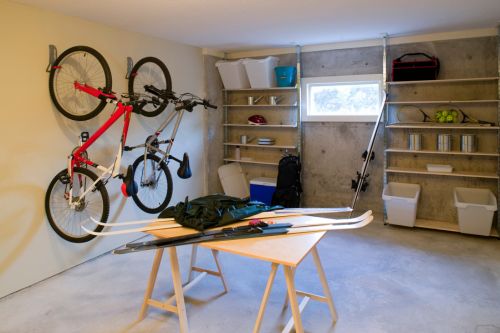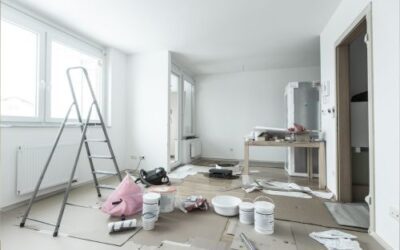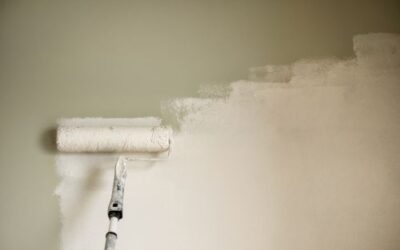Basements, storerooms or garages have unique conditions: poor ventilation, high humidity and increased risk of mould or condensation. Using conventional paint in these spaces is a common mistake that leads to ephemeral finishes and health problems due to fungi or bacteria.
At Bartolomé Bas, where we have already dealt with how to act in cases of damp in interior walls, we know that the previous treatment and the type of paint used make the difference.
Contact our professionals
Properties that a paint suitable for basements should have
For spaces with poor ventilation or high ambient humidity, the ideal paint should have at least these characteristics:
-
Breathability: it allows the walls to ‘breathe’, preventing the accumulation of water inside.
-
Anti-mould: it contains biocides that prevent the appearance of fungus.
-
High adhesion: it adheres well to porous surfaces such as cement or brick.
-
Condensation resistance: very important in humid climates or underground spaces.
An excellent choice is breathable acrylic paints or specific paints for humid environments. In some cases, such as floors or walls in direct contact with water, epoxy paints can be used, but require good ventilation during application.
Recommended paint types
Depending on the condition of the basement and its intended use (storage, room, machine room), we can choose from:
-
Acrylic paint with fungicides: washable, safe and resistant.ç
-
Breathable waterproof coatings: ideal for preventing leaks without closing the pore of the wall.
-
Anti-mould plastic paint: specifically formulated for interiors with poor ventilation.
-
Two-component epoxy or polyurethane paints: recommended for floors or industrial spaces.
If you are also considering renovating the exterior of your home, don’t miss our post on types of paint for facades.
How to prepare the basement before painting?
-
Deep cleaning: remove dust, mould stains and traces of previous paint.
-
Damp-proofing treatment: if there are signs of leaks, apply a waterproofing sealant or water-repellent resin.
-
Crack repair: use specific mortar or putty to close cracks.
-
Primer: apply a breathable primer to improve adhesion and seal the substrate.
In addition, if there are exposed wooden elements, it is advisable to protect them with damp-proof varnishes such as those recommended in our article on exterior wood treatment.
Application: key techniques
-
Use a microfibre roller for walls and a brush for corners or joints.
-
Apply two coats, allowing to dry according to the data sheet.
-
Reinforce areas prone to dampness, such as low corners or joints with the floor.
During application, if there is no natural cross ventilation, use a portable exhaust fan or ventilate from adjoining spaces.
Extra tips to keep the basement healthy and mould-free
-
Install a dehumidifier if relative humidity exceeds 60%.
-
Ventilate daily, even with the help of exhaust fans or by opening doors for several hours.
-
Avoid storing items against the walls.
-
Regularly check the condition of joints, skirting boards and corners.
Proper painting should be part of a comprehensive protection system. This includes checking downspouts, exterior waterproofing and possible structural cracks.
When is the best time to paint a basement?
Ideally, it is best to do it in dry seasons (spring or autumn), when the ambient humidity is lower and there are more possibilities to ventilate the space properly. If the basement already shows serious symptoms of damp, it is advisable to contact a technician first.
Bartolomé Bas: experts in painting damp areas
With more than 20 years of experience and hundreds of projects carried out in basements, garages and difficult to access areas, our team is prepared to offer you a long-lasting, aesthetic and healthy result.
You can see some of our work in the project gallery or contact us for a personalised, no-obligation quote.
Other publications that may interest you
How much does it cost to paint a house?
Painting a house not only renews its appearance, but also protects its surfaces and increases its value. However, determining how much this project will cost can be a challenge, as there are several factors that influence the budget. In this guide, we'll explore the...
How to paint a wall that has already been painted a different colour?
Refurbishing a wall with a new colour can completely transform the ambience of a space. However, painting over an already painted wall requires following certain key steps to achieve an impeccable and long-lasting finish. In this guide, we will explain how to do it...
How to clean walls painted with washable paint?
Walls painted with washable paint are an excellent option for keeping your home clean and aesthetically pleasing. This type of paint is specifically designed to resist dirt and stains, making it the perfect choice for high-traffic areas such as kitchens, living rooms,...




